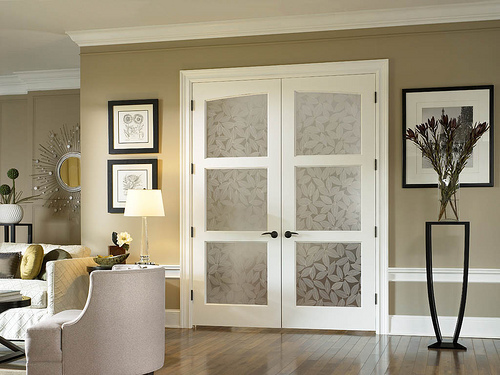Eco-savvy communities approach their environmental responsibility in a systematic way. Green infrastructure and construction has become a social and economical need. From design to construction, operation, maintenance, and renovation, the approach should be resource and energy efficient. The practices and technologies used in green building are constantly evolving and differ from region to region. Doors are an essential part of interiors and to build sustainable homes, we need eco-friendly long lasting doors that are easy on the environment. There are some green options available in the market that are not only environmentally healthy but also contribute to the aesthetics.

1. Doors made up of reclaimed wood
Reclaimed lumber or antique lumber is reclaimed from factories, old barn, castles, warehouses, and snow fences. Doors made from reclaimed wood are found in rich colors and are exceptionally beautiful, which is usually difficult with new timber. They have a unique vintage appearance and are more stable and durable than newly cut wood. As it has already been exposed to heat and humidity, the impact of climate and heating system is less on them.
2. Thermal fused doors
Thermal fused doors are made with laminate sheets that have been fused to high quality recycled substrate core using high heat and pressure. These doors have high-recycled content and thus help to conserve forest and save the invaluable old trees. They are manufactured in an energy efficient way and some have antimicrobial micro shields on them. They save energy and are quite useful in regions with warm.
3. Bamboo doors
Inherently green bamboo doors are rich and exotic. With the exceptional combination of beauty and durability, bamboo doors are timeless and unique. Bamboo doors are made up of solid core poplar LVL stave material with solid bamboo ends. The panels are covered with MDF core with 1/8” solid bamboo veneer. These doors are environmentally safe and free of toxins. Because of special production techniques, these doors are stable even under extreme climatic variations. Bamboo grows quickly so there is no strain on the environment to produce it.
4. UPVC doors
The extrusion process of UPVC doors is energy efficient. It leaves fewer carbon footprints. UPVC profiles are environmentally healthy as they can be completely recycled and reused. Here calcium zinc stabilizers are used which make them more resistant to aggressive weather conditions. They are cost-effective and can be replaced with conventional wood and metal windows. Use of UPVC slows down the cutting down of forest.
5. Hollow metal doors
Long lasting durable metal doors put less burden on the environment. The hollow metal doors are durable and efficient. They are more resilient, strong, and fully resistant to fire, water and harsh weather. They are completely recycled and can be reused. Hollow metal doors and frames fit well to the eco-movement, as they are not dumped in landfills but used again to make products. Use of metal doors helps ease the demand for harvesting fresh timber and new raw materials.
6. Composite wooden doors
These doors have composite wood construction made up of by-product wood chips that make them durable. Durable doors put less stress on the environment. They are resistant to climatic variations. These engineered woods are made from the same hardwood and softwoods that is used to manufacture lumber. Sawmill scraps and other wood waste is used to make composite wood. It is also possible to manufacture similar engineered wooden doors from lignin and cellulose containing materials such as rye straw, wheat straw, rice straw, and sugarcane residue. Composite wooden doors provide natural elegance of wood. They are easily and beautifully finished with paints and varnishes. They also make efficient use of wood. However, composite wooden doors have some disadvantages as they burn more quickly than solid lumber and require more primary energy. Nevertheless, they are best for interior doors.
7. Wood plastic composite doors
These doors are made up of wood fiber and plastics. In addition to wood fiber and plastic, it can also contain other lignin and cellulosic fillers like pulp fibers, peanut hulls, wheat, and rice straw. The manufacturing process is highly energy efficient and they are completely recycled. They are sustainable and environmentally healthy. They do not corrode and are highly resistant to decay and insect attack. They do absorb water into the wood fibers. One of the major drawbacks is that they catch fire easily and because of the addition of polymers and adhesives, their life span is less and can be recycled only for a limited number of times.




